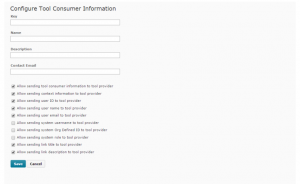I think we all understand that the LMS as a tool is a pretty cruddy one. It does a lot of things, some well, many not in ways that you, as an instructor would prefer. At last year’s Fusion conference, we heard D2L speak about their LTI integrations, and how Brightspace was the integrated learning platform. I’ve heard that many people envision what D2L are selling as a hub and spoke system – where Brightspace (or the Learning Environment, or even more crudely, the LMS) acts as a hub – and the tools connected are the spokes. I wonder what things would look like if we extrapolate that idea out to the nth degree?
For instance, you could replace the gradebook with a tool that worked for you – Google Spreadsheets, Excel online, or a box plot device. Chalk and Wire has replaced Canvas’ gradebook in one instance, and I’m sure that the inefficient tools of any LMS are things that one would want to replace. Does that mean the all of them? For some snarky folks, yeah, that would mean all of them. Those folks should just teach in the open web.
The LMS also provides a fairly elegant way to get student data into your course area. That’s probably something instructors or faculty wouldn’t want to do. Hell, I’m glad we have someone on my team that wants to do it because it’s an ugly job.
And for many, the content management of these systems are pretty good. In D2L’s case, the way the content tool works is pretty decent (now if hide an item means really hide any evidence of the item, we’re talking). Imagine if you could take elements of one system you like (say Angel) and add-in features to allow for customization for the individual course needs?
Or how about replacing the groups tool with some other mechanism? Quizzing is something that people already are pushing to publishers like Pearson or McGraw Hill, but what about up and comers like Top Hat or Poll Everywhere (which, lets face it, is essentially a quiz engine wrapped in a polling tool)? Discussions become a Disqus link at the bottom of a item in the content area… there’s lots of clever fun to be had with this idea.
Now to some extent, you can do this already (depending on how locked down your system is by your systems administrators). Change the navigation bars to point to tools you use connected through LTI – however you have some issues with doing this yourself. The biggest one is that at some point, you’ll run into some technological problem that you can’t solve easily. I suspect, that’s what the Internet is for.
At some point one (or many) of you will point out quite rightly, that this sounds an awful lot like what the web is (or more accurately, was). And my answer is yeah, that’s about right. Used to have websites that we plugged bits of HTML into to make what we needed. Until it was commodified.
You can probably draw a comparison to the modern LMS to Facebook – mostly everyone uses it but would probably use a better system if everyone else went to it first. Universities would consider another model as long as everyone will come along. However, in the current higher education system, where we have seasonal and precarious work dominating instructional positions – there’s no time or want to develop a better way. The LMS works as a co-conspirator in the commodification of education. It’s not directly responsible, but it plays a part in making education at university an easily packaged and consumed affair. The LMS isn’t alone, Coursera, Udacity, those type of MOOCs are equally complicit, or maybe even moreso.
And that’s a more likely reason we’ll see a modular LMS. More vendors get opportunities to get into different institutions that aren’t their current clients.
